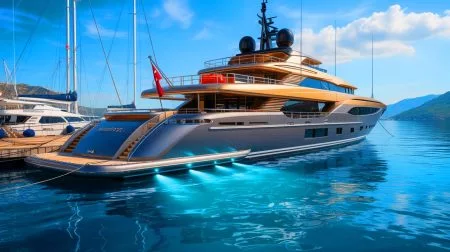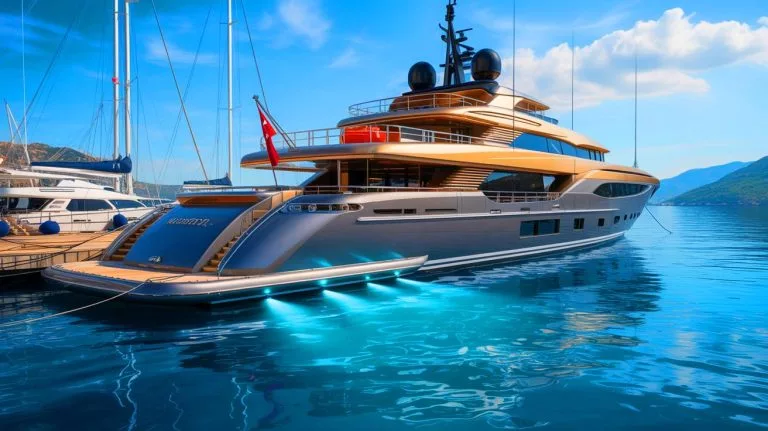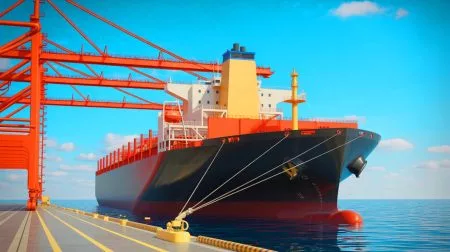| IN A NUTSHELL |
|
One of the world’s largest superyachts, the Eclipse, owned by billionaire Roman Abramovich, has been docked for nearly three years. However, this period was far from restful. The yacht consumed vast amounts of diesel fuel to keep its interiors cool, highlighting the immense energy demands of maintaining such a vessel. As the yacht departs its Turkish port, it leaves behind a significant environmental and financial footprint. This situation raises questions about the sustainability and ethics of maintaining luxury assets with such voracious energy appetites.
The Immense Energy Appetite of a Stationary Giant
Since the end of 2022, the 533-foot behemoth was moored in the port of Muğla, Turkey. The yacht’s apparent stillness belied the ceaseless activity of its generators. These engines ran continuously to power an extensive air conditioning system, crucial for protecting the lavish interiors and intricate electronics from the region’s intense heat and humidity. According to sources in the luxury sector, this preventative maintenance was essential for preserving the yacht’s value, estimated at over $600 million.
Notably, this effort was not meant for the comfort of a non-existent crew but rather for the upkeep of a floating asset. Each day, for over 900 days, the yacht consumed diesel to prevent its precious wood paneling from warping and to keep its servers cool. This scenario underscores the staggering resources needed to maintain these luxury vessels, which are often described as floating fortunes.
Eclipse: More Than a Yacht, a Technological Fortress
To understand the Eclipse’s energy needs, one must consider its true nature. It is far more than a pleasure craft; it is a technological marvel akin to a private military base. The yacht boasts an array of advanced features:
- An anti-missile defense system.
- Two helipads for helicopter landings.
- A mini-submarine capable of diving 164 feet.
- Bulletproof windows and partial hull armor.
Inside, the extravagance continues with multiple pools, a cinema, a nightclub, and luxurious suites. These amenities are supported by a complex IT infrastructure that, much like a data center, must be kept at a stable temperature to function optimally and avoid premature degradation. Even while docked, an onboard crew of 60 manages the yacht, as reported by Turkish media.
The Awakening of the Titan for a Massive Overhaul
After an extended period of inactivity, the Eclipse has finally set sail, headed for the Tuzla shipyard in Istanbul. There, it will undergo a complete “refit,” a comprehensive overhaul. This massive project involves numerous artisans and engineers and can range from simple repainting to complete upgrades of navigation, propulsion systems, and interior accommodations.
This departure closes a chapter for the port of Muğla, which hosted one of the most energy-intensive creations ever conceived for nearly three years. As noted by LuxuryLaunches magazine, “continuous operation was essential to preserve the yacht’s sumptuous interiors and sophisticated systems from the oppressive heat.” This statement encapsulates the financial and ecological abyss that owning such an immense steel entity represents.
Environmental and Ethical Considerations of Superyacht Ownership
The environmental implications of maintaining such a superyacht are significant. The vast amounts of fuel consumed over the years have not only resulted in substantial emissions but also pose questions about the ethical responsibilities of superyacht owners. The continuous operation of such a vessel, even while docked, reflects a lifestyle predicated on luxury at a considerable environmental cost.
Furthermore, the yacht’s recent refit raises questions about the sustainability of such practices. While the refit may enhance the yacht’s efficiency, it also underscores the broader environmental footprint of luxury maritime assets. These considerations are increasingly relevant in a world grappling with climate change and environmental degradation.
As the Eclipse sets off for its extensive refit, it leaves behind a trail of economic and ecological concerns. The immense resources required to maintain such a vessel prompt a reevaluation of the sustainability of luxury ownership. As society moves towards greater environmental consciousness, one must ask: How can the superyacht industry reconcile luxury with sustainability in the future?
Did you like it? 4.6/5 (27)







Wow, $50k a day just for diesel. Could’ve bought another yacht by now! 😂
Wow, $50,000 a day just to keep the yacht cool? That’s insane! 💸